Why It's Important to Keep Software Up-to-Date
Keeping software up-to-date is crucial for overall security, how well your systems work, and how fast they are. In other words, Maintaining an optimized digital environment through regular updates minimizes cyber risks and enhances system integrity and security.
Easy2Patch has crafted this blog post to help you learn about software updates. We're here to encourage everyone to update their software regularly, tackle the challenges of managing updates, and share some top-notch practices. Also, we'll show you how Easy2Patch's solution makes patch management super easy.
Now, let's dive into understanding software updates.
Understanding Software Updates
Making sure your software stays updated is like keeping your car running smoothly—those regular tune-ups and fixes! Well, in the tech world, we call them software updates or patches. They're crucial for keeping your software healthy and safe. A balanced update strategy combines automatic and manual approaches. It's important to consider your system's needs and weigh the risks and benefits of each method.
Let's break it down together and get the most out of it! We'll talk about the different types of updates and what sets automatic and manual ones apart.
What are the Different Types of Software Updates?
Patches
Patches are small fixes for software. They fix bugs and make minor improvements. They usually update the third number in the versioning system (e.g., 1.0.1). Patches are important for fixing problems and keeping the software compatible with existing systems.
A good example of a software patch is when Microsoft finds security gaps in Windows, they release a patch to close them up and keep your system safe. For instance, if hackers can get into a user's system, Microsoft will release a patch to solve that problem.
Minor Updates
When it comes to minor updates, we're talking about those minor updates that usually add new features and make improvements to the software. Unlike major upgrades that we will explain, they still work with older versions, so you can switch over easily.
For example, Adobe Photoshop may introduce a new tool or refine an existing one within an existing version. This minor update aims to enhance the user experience without significant changes to the overall operation of the software.
Major Upgrades
Now, major updates are a whole different game! They are big changes to the software, often adding exciting new features.
For example, Microsoft's transition from Windows 10 to Windows 11 marked a significant upgrade. This update brought forth a completely revamped user interface and incorporated numerous additional features.
Easy2Patch facilitates the automated updating of third-party applications. It ensures update reliability and distributes them to specific devices or user groups based on criteria, covering both minor and major updates.
Automatic vs. Manual Updates: Differences, Pros, and Cons
Automatic Updates
Automatic updates bolster security by consistently applying the latest patches, thus reducing cyber threats. They save time and effort by handling updates without user intervention. These updates often enhance performance, providing a smoother user experience. However, they lack control, which might lead to unwanted changes and disruptions. Users with limited internet speed may find continuous updates burdensome, and automatic updates could prompt inconvenient system restarts.
Manual Updates
Manual updates, in contrast, grant users control over when and which updates to install. This autonomy leads to a stable environment, as users can review updates before installation to ensure compatibility and avoid disruptions. Manual updates also enable users to manage internet bandwidth effectively by scheduling installations during off-peak hours. However, delaying manual updates may leave systems vulnerable to known security threats, emphasizing the importance of timely software updates.
Understanding software updates sets the stage for exploring how they enhance cybersecurity. Continue reading this blog post to gain information about the crucial role of software updates in cybersecurity.
How Can Software Updates Improve Cybersecurity?
It's important to keep in mind that software updates are only one component of the cybersecurity puzzle, alongside tools such as firewalls, antivirus software, and user training. Here, we will explain how software updates strengthen defenses against potential cybersecurity vulnerabilities:
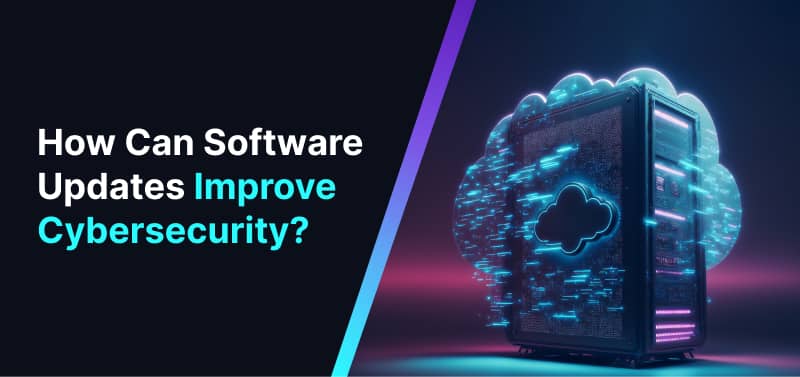
- Addressing Security Vulnerabilities: Software updates often include security patches to fix known vulnerabilities. These patches act as virtual locks, closing off potential entry points for cybercriminals. For example, companies like Microsoft regularly release patches. These updates include their monthly Patch updates, to quickly address identified vulnerabilities.
- Combating Exploited Vulnerabilities: Cyber threats, like ransomware and malware, often target outdated software. These outdated systems are easy targets for attackers because they exploit known vulnerabilities that haven't been fixed. Studies show that cyber actors exploit older software vulnerabilities more than newly disclosed ones. Keeping software updated significantly reduces vulnerability to such threats.
- Fixing Bugs and Closing Loopholes: Software developers use updates to improve user experience, efficiency, and security. These updates enhance security and also ensure smoother operation and reliability. Patching cybersecurity infrastructure components lowers the chance of data breaches.
Now that we understand how software updates improve cybersecurity, let's explore the benefits of regularly updating your software.
Benefits of Regular Software Updates
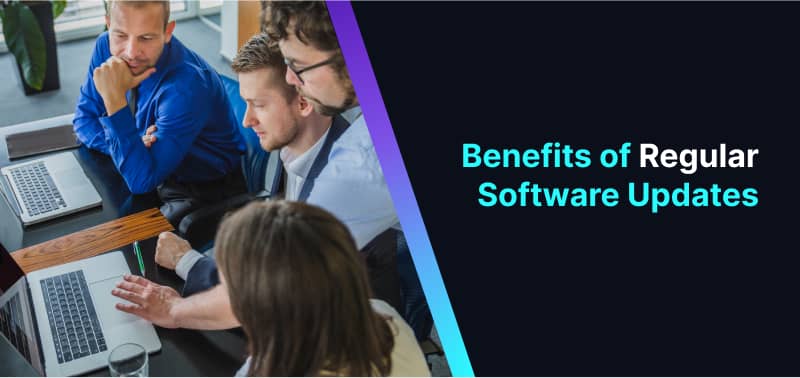
Keeping up with updates has more benefits than we've mentioned. It makes your work easier and improves your experience. Wondering how? Let's break it down:
1. Security
Software updates protect your digital assets against cyber threats. With each update, we're fixing the weak spots in our code to keep the hackers out. They love to prey on outdated software because they know all the little holes to sneak through. But when we stay on top of those updates, we're sealing up those holes and making it a lot harder for them to get their hands on our data without permission.
2. Performance
Every time we update, we're fine-tuning the gears to make everything run smoother and faster. Sometimes your device feels slow, right? That's where updates help. Engineers are always tweaking the code. Each new version works better, using resources more efficiently. So, when you update regularly, your device runs faster and smoother.
3. Compatibility
Regular software updates make sure your applications stay in line with the latest advancements. This stops compatibility problems that could disrupt your workflow. Updates fix any compatibility issues, making sure your programs and devices work together smoothly. When you keep your software up-to-date, you have fewer interruptions and get the most out of your digital tools.
It is time to move from the benefits of regular software updates and explore the dangers of ignoring them!
Risks of Neglecting Software Updates
The impact of overlooking updates can be profound for individuals and businesses. Cyber attacks or ransomware strikes hit the headlines nearly every day. They are impacting a range of sectors like gaming, healthcare, water utilities, breweries, and more. Just as an example, in October 2023, marking almost three years since the notable SolarWinds breach, where a vulnerable software update impacted certain customers, SolarWinds faced charges from the Securities and Exchange Commission (SEC).
Here's a comprehensive look at the potential dangers:
- Increased Risk of Cyber Threats: When software gets old, it becomes an easy target for cyber-attacks. Hackers exploit known weaknesses that haven't been fixed yet.
- System Instability: Skipping software updates can negatively affect how well your tools and programs work together. It means more bugs, hiccups, and less getting done. Plus, it makes integrating with other systems a headache, slowing everything down.
- Falling Out of Compliance: Tech regulations are strict, and running outdated software might mean breaking them. That puts businesses in legal repercussions and damages their reputation in the industry.
- Loss of Reputation and Authority: Breaking rules doesn't just hurt your legal standing. It also makes customers question how trustworthy you are. Losing that trust can hurt your brand's future.
- Incompatibilities: Outdated software might not play nice with updated systems, causing operational headaches and delays when transferring data. These issues can hinder business processes and strain relationships with other businesses you rely on, such as third-party suppliers or vendors.
- Financial Losses: A breach due to neglected updates can cause significant financial losses. And the hit to your reputation can sting even worse in the long run!
- Risk Preference and Update Decisions: Individuals or organizations with a higher risk tolerance may be inclined to neglect updates. But that gamble could leave them wide open to cyber threats and data disasters.
- Ransomware, Malware, and Viruses: Out-of-date software is like an open invitation to viruses and malware. Updates are crucial for closing security loopholes and strengthening defenses against malicious actors.
- Fewer Integrations and Improvements: Skipping updates means missing out on all the opportunities to leverage cutting-edge technologies and software improvements. It's just like letting your competitors get ahead and defeat you.
- Inconvenience due to Incompatibilities: Discovering incompatibilities between software can disrupt operations and impede data flow. Especially when you're working with outside suppliers or partners. It's a real pain that can slow things down.
So, what’s the solution?
To stay safe from cyber threats, individuals and businesses need to focus on a few things: keeping their software up to date, knowing the challenges that come with managing updates, and following the best practices for handling them. We'll go over all of this in the upcoming sections.
What are the Challenges in Update Management?
Updating software, it can be challenging. Sometimes the software update process gets even tricky! However, there is always a solution to problems. Let's explore these problems and solutions in detail. Here are some of the problems we face:
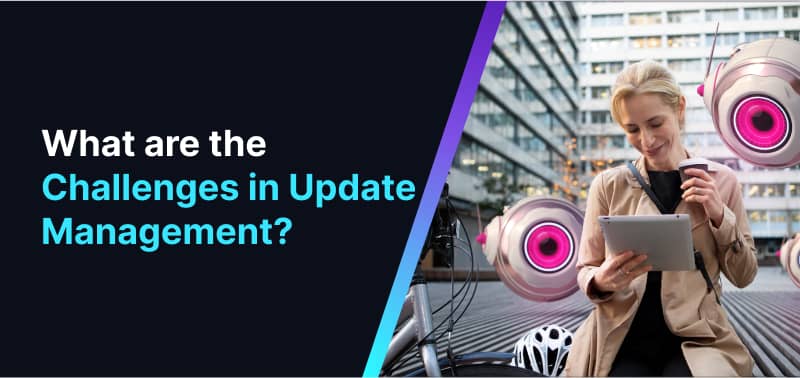
- Lack of Automation Tools: Sometimes, it's hard to find affordable tools to help us update software automatically. Doing it all by hand takes a lot of time.
- Multiple Operating Systems and Applications: Nowadays, we use all kinds of different systems and apps, like Windows, Mac, Linux, and loads of others. Each one needs updates, and keeping track of them all is a headache. They might also be all interconnected. This complexity can lead to delays in patch deployment and leave systems vulnerable to exploitation.
- Remote Workforce: With more people working remotely, organizations have to make sure their devices are regularly patched and updated. Managing Bring Your Own Device (BYOD) policies and contractor devices adds further complexity to update management.
- Testing Takes Time: Critical security updates require thorough testing to prevent unintended consequences such as system downtime or compatibility issues. It also requires careful planning and execution.
- On-going Visibility and Monitoring: Organizations need to monitor the patch status of all devices. Even if a device wasn't connected when we first sent out the updates, we've got to make sure it gets patched when it connects again. Without continuous monitoring, devices may remain vulnerable to known exploits.
- Shortage of Security and IT Staff: There aren't always enough of us to handle all the work. This shortage can lead to delays in patch deployment and increase the organization's exposure to cyber threats.
Solutions to Software Update Management Challenges
Addressing these challenges requires a proactive approach to update management. How do we deal with all this? Here are some strategies to streamline the software update process:
- Automatic Updates: Automatic updates wherever possible ensure that devices, software, and applications receive patches promptly. Easy2Patch Automated Third-Party Patch Management reduces the burden on IT staff and minimizes the risk of delayed patch deployment.
- Updates Straight from the Source: When we download updates, we need to make sure we're getting them from safe places, such as official app stores or verified vendors. Avoid downloading updates from unverified sources, as they may contain malware or other security threats. Easy2Patch provides centralized patching control. It manages the distribution of third-party application updates centrally with SCCM, WSUS, and Intune support. Additionally, with hash check controls, file reliability is ensured.
- Make Checking for Updates a Habit: Even if updates happen automatically, it's a good idea to check for them regularly. Encourage users to check for updates on their devices, software, and applications. Establishing a culture of proactive update management helps maintain system security and stability. Easy2Patch distributes and patches software updates to various devices or systems, including geographical locations.
- Use of Patch Management Solutions: Easy2Patch provides comprehensive update coverage for all systems and applications. Our solutions automate patch deployment, streamline the update process, and ensure that all devices remain up-to-date with the latest security patches. Moreover, Easy2Patch simplifies and enhances your IT security strategy. It’s a comprehensive solution for managing software updates, reducing potential errors, and effectively addressing security vulnerabilities.
Best Practices for Managing Updates and Third-Party Patch Management Effectively
Whether you're an individual or a big company, effective patch management practices significantly enhance your security posture and operational efficiency. Here's some easy-to-understand best practices on managing updates effectively, including third-party patches, and why Easy2Patch is a game-changer:
- Use a Patch Management Tool: Employ a patch management tool, like Easy2Patch, to automate the deployment and management of patches.
- Prioritize Patches Based on Risk Assessment: Some patches are critical because they fix urgent security problems, while others are less urgent. It is a good idea to focus on the urgent ones first to protect your systems better.
- Regularly Review and Update Patch Management Policies: As new threats emerge day by day, and IT environments evolve constantly, your update should too! Regularly updating your policies helps you to keep your systems safe.
- Comprehensive Testing Before Widespread Deployment: Before deploying a patch, try out the updates on a small scale. It means conducting comprehensive testing on a small scale to identify any potential issues. Testing minimizes the risk of unintended consequences and ensures smooth deployment.
- Maintain an Inventory of All Software: Knowledge is power. It's essential to know what software you have installed. It's like knowing what ingredients you have in your kitchen before cooking; you identify vulnerable software and prioritize patches accordingly.
- Monitor for New Patches: You check your mailbox for new letters regularly, right? So, ongoing check for new updates keeps you informed about the latest security updates and vulnerabilities.
- Educate Your Team: Everyone on your team should understand why updates are important and how to do them.
Why Easy2Patch is a Game-Changer
Updating software can be a hassle, but Easy2Patch makes it easy. Here is how:
- Easy2Patch Automates Third-Party Updates. It takes care of updating all the software on your computer, not just the ones from companies like Microsoft.
- Easy2Patch Centralizes Patching Control. It puts you in control of all your updates from one place, making everything easier to manage.
- Easy2Patch Deploys Patches and Installs Updates as soon as they are available.
- With Easy2Patch, you can trust that your updates are legit and from reliable sources.
- Easy2Patch Integrates with Microsoft ConfigMgr, Intune, and WSUS.
For more detailed information about Easy2Patch Click Here.
Frequently Asked Questions
Software updates are important for security, performance, compatibility, and new features. Easy2Patch strongly recommends installing updates as soon as they are available.
- For Windows: Go to Settings > Update & Security > Windows Update > Advanced options.
- For MacOS: Go to System Preferences > Software Update.
Most apps have an option in their settings to check for updates or turn on automatic updates.
Critical updates are usually flagged by the software vendor and accompanied by advisories that explain the severity of the issues they address. They often come with a high-priority rating.
IT Automation Key Benefits and Best Practices

What Is Vulnerability Management?

Ultimate IT Risk Management Guide 2024: Best Practices, Strategies, and Tools
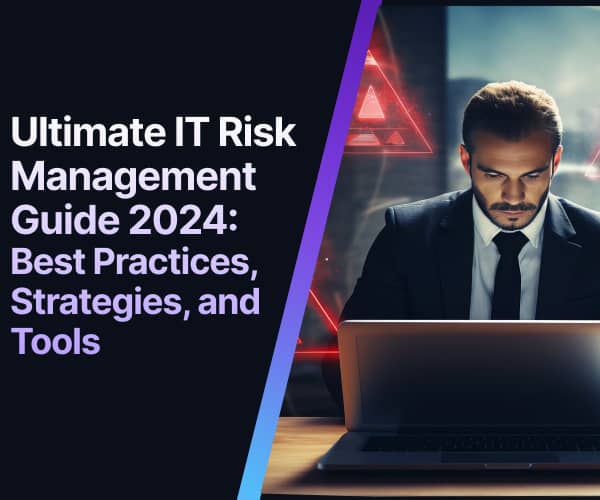
Best Practices for IT Infrastructure Management in 2024

What is Windows Patch Management? Features, Challenges, and Best Practices in 2024
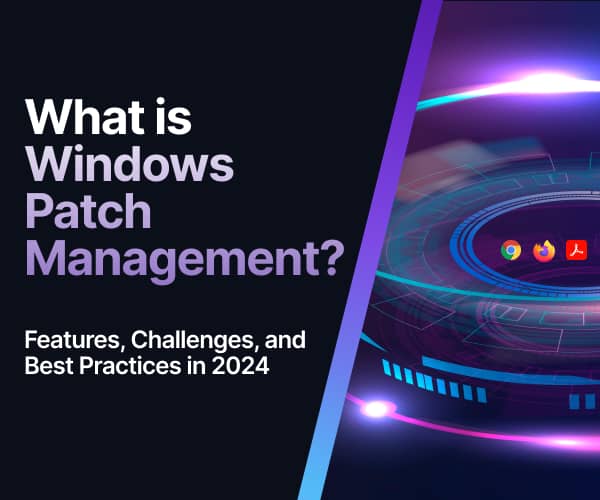
What are the Cybersecurity Risks Associated with Outdated Software and Operating Systems?






